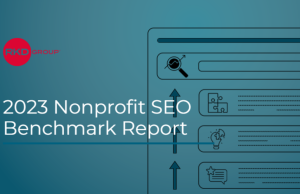Philanthropic transparency while building trust
Like other areas of private and public life, the nonprofit sector faces increased pressure to build trust through greater transparency around funding and accountability around programs and impact.
While not traditionally part of the nonprofit tech stack, blockchain technology brings with it an opportunity to facilitate a new generation of efficient philanthropy by giving donors greater visibility into the organizations they support. This transparency is entirely different from what is available using traditional monetary rails. It represents a paradigm shift in how nonprofit leaders can communicate with donors and demonstrate reliability in ways more accessible than an annually filed Form 990 with the Internal Revenue Service (IRS).
Declining Trust, Generational Impact
Trust in nonprofits has eroded in recent years. According to a 2021 study from Indiana University’s Lilly Family School of Philanthropy (bit.ly/456GuqX), trust and giving rates have declined in tandem for Americans of all ages, taking a significant hit amongst younger Americans. The study’s data showed fewer than 50% of American households were donating to charity in some way, marking the lowest level since tracking began.
The key factors the researchers identified in this downturn outside of general market conditions were a lack of both financial transparency and proof of impact. When the money leaves your wallet, do you truly know where it’s going or how it will be used?
Many Americans are feeling burnt by the status quo and want a system that encourages trust in philanthropic organizations. Specifically, the Indiana study shows that younger generations put a premium on transparency, alongside accountability and speed. If fundraisers are going to continue to grow their organizational donor base and rectify their image amongst younger Americans to encourage a new generation of philanthropists, they need to adopt new ways of building trust.
Building Transparency On The Blockchain
It’s important to understand how building transparency through the use of blockchain technology represents a specific targeting opportunity for the very people who are the least trusting of nonprofits.
The majority of blockchain participants are younger, primarily Millennials and Gen-Z, and represent a massive pool of donors into which nonprofit leaders are only just starting to tap. Other signs here are promising as well — these generations appear to be more generous than others (bit.ly/44ZeRjr), giving more than twice as much as their Gen-X and Baby Boomer counterparts.
These young donors are primed to take advantage of giving options and make philanthropic use of their capital if there are opportunities to give the crypto assets they have, and nonprofit leaders embrace greater transparency to build trust amongst this cohort.
 One of blockchain technology’s greatest benefits is that all transactions that occur are recorded on a digital, publicly viewable, and indelible ledger. There is perfect information symmetry, the principal feat accomplished by blockchains like Ethereum. Compare this experience to that of traditional monetary rails, where all transactions are private unless you are the giver or receiver, and no one aside from banks and regulators can see all the details.
One of blockchain technology’s greatest benefits is that all transactions that occur are recorded on a digital, publicly viewable, and indelible ledger. There is perfect information symmetry, the principal feat accomplished by blockchains like Ethereum. Compare this experience to that of traditional monetary rails, where all transactions are private unless you are the giver or receiver, and no one aside from banks and regulators can see all the details.
With blockchain technology, donors can track how on-chain funds are spent and ensure that nonprofits have a verifiable audit trail. Having robust and transparent impact tracking and measurement systems could help nonprofits reduce unnecessary costs, eliminate corruption, and boost levels of trust.
More Blockchain Benefits: Speed
Those familiar with the nonprofit space know that speed is not a feature of the typical donation experience. Funds often take days to arrive at the nonprofit, even when using tools like PayPal (bit.ly/3OQ1Sv1) or ActBlue (bit.ly/3QtGih5). One of blockchain philanthropy’s strengths is immediate gift delivery upon transaction completion, which allows nonprofits to connect with donors across the globe and mobilize much-needed funds to address emergencies swiftly.
Consider disaster relief efforts after the earthquake in Syria/Turkey and support for refugees displaced by the war in Ukraine — these are situations that required immediate and ongoing assistance. Even a few days delay as organizations wait for checks to arrive and be cashed can have real opportunity costs By using a system that moves funds swiftly, needs can be addressed faster and organizations become more nimble.
In addition to the speed of gift delivery, philanthropic efforts on the blockchain have also been able to address one of the most common critiques of Donor-Advised Funds (DAFs): that they sit on charitably contributed capital for an extended period of time, earning fees while diminishing the funds left for charitable use. Typically, DAFs disperse approximately 22% of contributed assets each year, meaning it takes about 4.5 years for all money to be distributed, all the while incurring 4.5 years of AUM fees.
At Endaoment.org (where I work), a 501(c)(3) that operates on the Ethereum blockchain and allows for the creation of “on-chain” DAFs, that same statistic is closer to 65% as donors take advantage of the blockchain to swiftly distribute funds. At the same time, traditional DAFs only report their earnings annually on the federal Form 990, with some earning literally billions of dollars (bit.ly/3OwvA6U) through their continued holding of donated capital.
A Giving Apparatus Of The Future
Enhanced efficiency, reliability, and transparency are key to blockchain philanthropy’s growth and represent the building blocks of the future of charitable giving. By harnessing the power of blockchain technology, nonprofits can mobilize swift support for people, organizations, and causes by building trust with a new generation of donors. Blockchain technology represents an important step forward for nonprofits focused on the future.
Zach Bronstein is the chief operating officer of Endaoment in San Francisco, California and is based in New York City.










